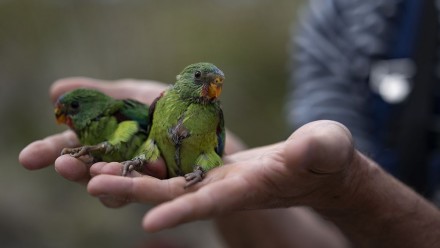Fenner School researcher leads expert workshop on Earth observations for water-related applications
On 28 March 2018, 22 experts from research, government and industry came together in Canberra to discuss the use of Earth Observations (EO) for a range of water-related applications, including water management, economic production, natural hazards and scientific research.
Chaired by Professor Albert Van Dijk of the Fenner School of Environment and Society at ANU, the workshop was prompted by the establishment of the Earth Observation for Government Network and the expected establishment of an Australian Space Agency.
A number of themes were explored during the two day event from which seven recommendations emerged, namely that:
- Australian organisations and a future Australian space agency emphasise maintenance of long-term data time series, providing continuity in satellite data archives and derived products, and promoting gapless and seamless consistency between different missions for key hydrological and environmental variables.
- Australia’s data custodians undertake steps to optimise the timeliness of data provision, either through reviewing their own processes or through advocacy at international fora.
- The Australian space agency formalise Australia’s contribution through cal/val activities, and actively support the maintenance and expansion of this capacity to support continuous satellite data benchmarking.
- NCRIS invest in the development of a suite of satellite products in a manner that substantially supports cal/val activities for continuous benchmarking, and that investment occur to address mismatches between information requirements and current NCRIS foci.
- Australia’s strengths in developing pragmatic EO applications and multi-sensor and model-data blending approaches is formally recognised and strengthened and contributes to international efforts where appropriate. Furthermore, that this capacity by supported and contributed at global scale in the context of international efforts.
- Geoscience Australia develop ARD radar products from Sentinel 1 that can be used to infer inundation dynamics, and that universities develop training programs for the use of radar observations in water-related applications.
- Australia advocate for a hyperspectral mission suited to water quality monitoring where opportunities arise.
This event was jointly organised by the Australian National University, the CSIRO, Geoscience Australia, the Bureau of Meteorology, the Terrestrial Ecosystem Research Network (TERN), Earth Observation Australia, and the Australian Energy and Water Exchanges Initiative (OzEWEX) ahead of the International Committee on Earth Observation Systems (CEOS) ‘Freshwater from Space’ workshop being co-chaired by Australia in The Netherlands in May.












